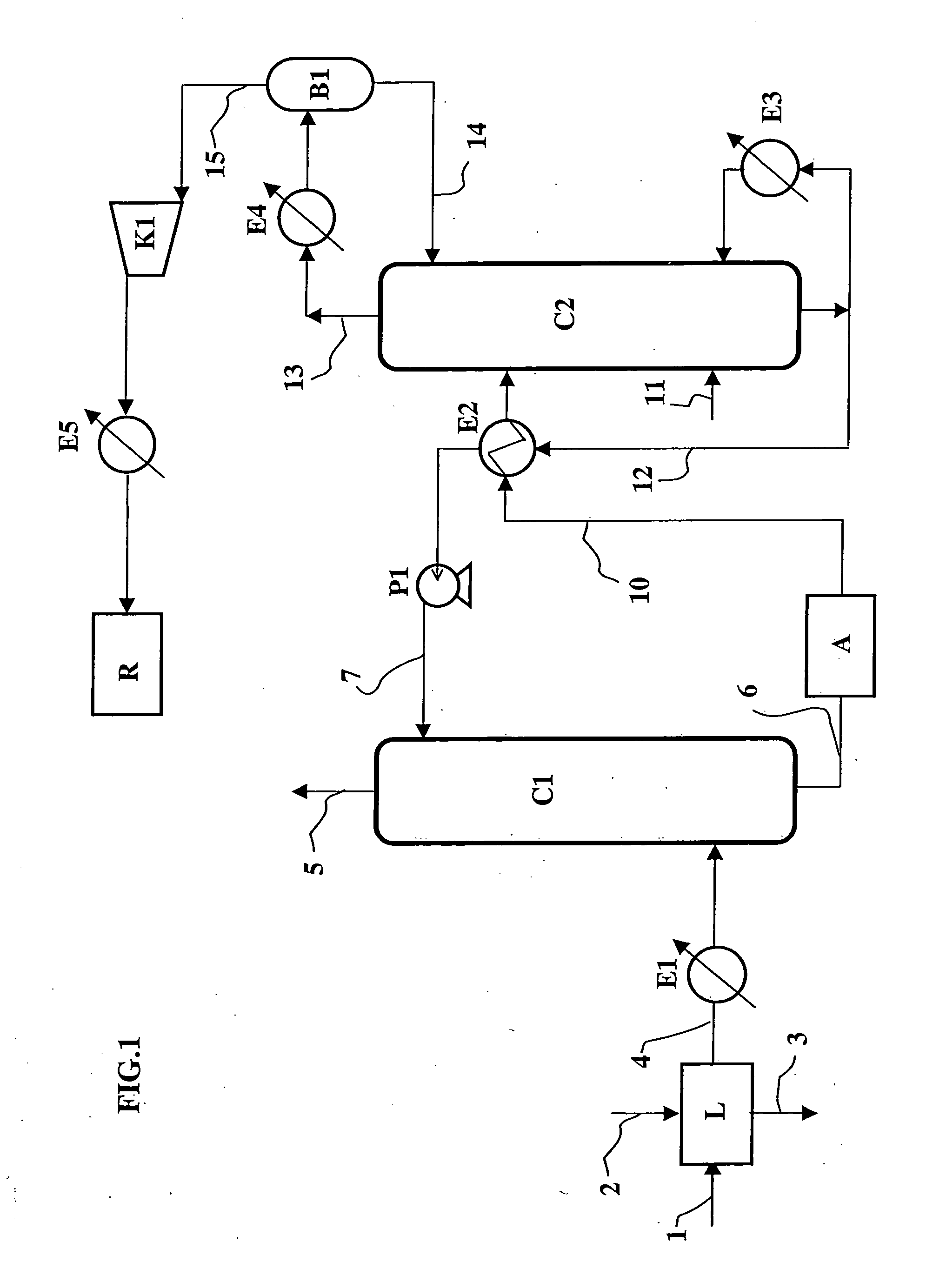Method of collecting carbon dioxide contained in fumes
a carbon dioxide and fume technology, applied in the direction of hydrogen sulfide, separation process, sulfur compound, etc., can solve the problems of limited capacity, special attention, and the chemical instability of alkanolamine-based solvents, and the tendency of cosub>2/sub
- Summary
- Abstract
- Description
- Claims
- Application Information
AI Technical Summary
Benefits of technology
Problems solved by technology
Method used
Image
Examples
case 1
[0052] Case 1
[0053] The solvent used is an aqueous solution containing 30% by weight of MEA (monoethanolamine). In order to collect 90% of the CO2, a flow rate of 2400 m3 / h of an aqueous solution is injected at the inlet of C1. Regeneration of this solution obtained at the bottom of C1 is carried out by distillation, at a pressure of 0.17 MPa abs. at the top of column C2. The temperatures at the bottom and at the top of column C2 are respectively 122° C. and 40° C. to allow regeneration of the solvent.
[0054] Considering the thermal exchange in exchanger E2 between the carbon dioxide rich and poor solutions, an amount of heat equal to 120 Gcal / h is supplied through reboiler E3 of column C2.
case 2
[0055] Case 2
[0056] The solvent used is a tetraethylene glycol dimethyl ether solution containing 30% by weight of MEA (monoethanolamine). To collect 90% of the CO2, a 2600 m3 / h flow rate of solvent is injected at the inlet of C1. Regeneration of this solution obtained at the bottom of C1 is carried out by distillation, at a pressure of 0.17 MPa abs. at the top of column C2. To favour regeneration of the solvent, 1% of the flow of decarbonated fumes obtained at the top of column C1 is fed into the bottom of regeneration column C2, this stream of fumes allowing to strip the carbon dioxide contained in the solvent. The temperatures at the bottom and at the top of column C2 are then respectively 125° C. and 40° C. to allow regeneration of the solvent. Considering the thermal exchanges, on the one hand, between the carbon dioxide-rich solution and the stripping fumes in C2 and, on the other hand, between the carbon dioxide rich and poor solutions in heat exchanger E2, it is necessary to...
PUM
| Property | Measurement | Unit |
|---|---|---|
| vapour pressure | aaaaa | aaaaa |
| temperature | aaaaa | aaaaa |
| temperature | aaaaa | aaaaa |
Abstract
Description
Claims
Application Information
 Login to View More
Login to View More - R&D
- Intellectual Property
- Life Sciences
- Materials
- Tech Scout
- Unparalleled Data Quality
- Higher Quality Content
- 60% Fewer Hallucinations
Browse by: Latest US Patents, China's latest patents, Technical Efficacy Thesaurus, Application Domain, Technology Topic, Popular Technical Reports.
© 2025 PatSnap. All rights reserved.Legal|Privacy policy|Modern Slavery Act Transparency Statement|Sitemap|About US| Contact US: help@patsnap.com

